Baldur’s Gate 3 pulls quite a few rules from Dungeons & Dragons 5E, with one of the most complex rules being multiclassing—the ability to pull attributes of multiple classes together to make something unique to your character. This system has the capacity to break BG3 open. But, if you’re new to the system, then some guidance on the best multiclass builds might help you make a character worth saluting.
What is a BG3 multiclass build?
To summarize, a “multiclass” build in Baldur’s Gate 3 involves taking a character who begins as one class and adding an additional class. This additional class is hampered compared to the original, gaining fewer starting proficiencies and outright negating some bonuses.
The class’s features and traits are, however, added to your character almost verbatim. Some class features, such as Channel Divinity or Extra Attack, do not stack.
How to create a multiclass character in BG3
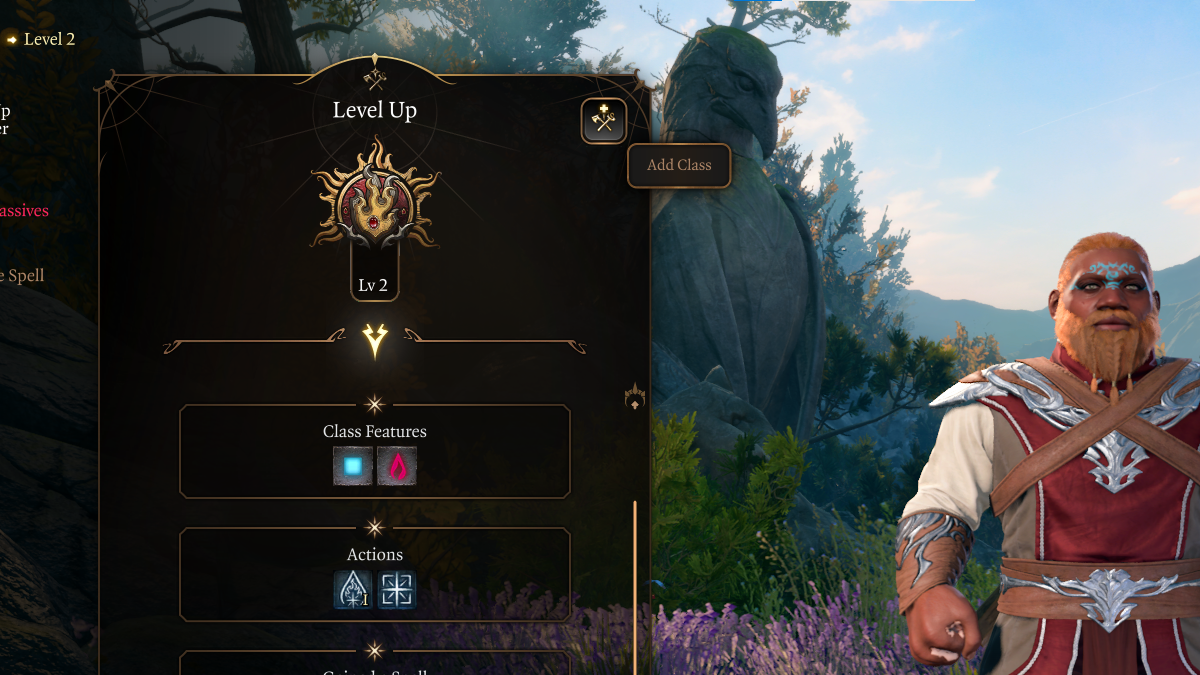
To multiclass in BG3, upon leveling up, click the plus (“+”) icon in the upper-left of the class addition tables. This will bring up another class choice—like the one you saw when you made your character in the first place—where you can add the first level of another class to your character. After you have your second class, either option can be found in the same menu location.
You can only level up one class at a time. So, if you are a Sorcerer Level One/Fighter Level One, your next level will either bump one of those classes to two (Sorcerer Two/Fighter One or Sorcerer One/Fighter Two) or add an additional class to the build.
When should you multiclass in BG3?
Before you add another class to your character in BG3, you must consider what you will be losing out on. BG3 goes to level 12, which is plenty of time. But, losing class features from a single class can be detrimental. For instance, all characters lose the opportunity to choose a feat at level 12 if they choose to multiclass even once.
That being said, most of the time, one or two levels in an alternative class will be worth more than the feat or level 11 ability that a class offers. 5E and BG3 are quite front-loaded, with many classes getting their strongest abilities in the first few levels. From there, consistency reigns.
There are a few things to keep in mind when making a Multiclass Character.
- Ability Scores: While Baldur’s Gate 3 does not have any prerequisites for multiclassing, it is a good idea to ensure that you have the ability scores to make a class palatable. For instance, a Bard with 10 Charisma only gets their proficiency modifier to their save DCs. However, if it is multiclassed into a character with 16 Charisma, your Bard spells will be just as strong as your, for example, Warlock spells. Ensure that your character has the right stats to make the aggressive parts of the class work. Supportive elements, like healing or buffs, do not need nearly as high attributes.
- Spell Lists: Whenever you multiclass, your spells get weaker. That does not mean you lose high-level spell slots. In fact, a Wizard Six/Sorcerer Six has the same number of spell slots as a Wizard 12. However, you do lose access to the higher-level spells learned. For instance, a Sorcerer Two/Wizard Nine gets their last level in Sorcerer. Despite being a 12th-level spellcaster, the Sorcerer level only can learn 2nd-level spells which they “just unlocked” when they reached level three. That being said, you can still raise low-level spells to higher-level slots which usually makes them around as useful.
- Class Features: Class features are the allure of the multiclass build. Check some of the later-game abilities of a character to see if you have some good abilities coming up.
Best multiclass builds in BG3
That being said, here are some of our options for multiclass builds that you can pull into your BG3 campaign. These builds can also serve as inspiration for your character, in case you like part of it but want to experiment with more levels in one place or fewer levels in another.
Because there are infinite multiclass options, here are 10 of our favorites. Feel free to tinker with the levels in one class or the other, or try your own. These are just some builds that we personally enjoy quite a lot.
10 represents a build that we have a lot of fun with but is a bit tricky to work into most comps, whereas No. 1 gets closer to soloing the game, though they sometimes just work so well with a team they can be the glue that holds three non-optimal builds together.
10) Paladin 7/Bard 5
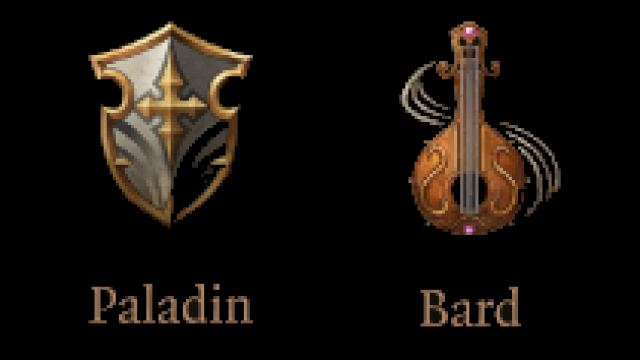
Okay, hear me out here.
The Bard gets a lot of flak for being a pretty dedicated class. However, the Paladin only really needs six levels to be in a good spot. By flexing Bard to five, you get two things that a Paladin actually kind of wants!
- We only recommend this build: If Paladin wants to double dip in a mostly high-offensive and mid-defensive build, with support opportunities.
- What you gain: Consistent bonus actions in Bardic Inspiration and Healing Word. More spells to burn on Smite.
- Disadvantages: Losing out on endgame Paladin features, like Improved Divine Smite, can make you less scary. You also lose a feat, which can be devastating for a class that wants Strength, Constitution, and Charisma.
This strange support build for Paladin stays on the frontlines by spending their first few levels on Paladin, jumping over to Bard to get Bardic Inspiration, finishing out Paladin, and bringing Bard to level five.
The Paladin should take the Oath of Devotion—a support subclass with great offensive defense—and the Bard College should be Valor, an offensive subclass with the ability to turn Bardic Inspiration into damage or AC and saving throws.
Lore can be interesting to help support your fellow Mages, but requires some careful teamwork. It also basically requires a six-level investment, which might make your Paladin less defensively durable. The College of Swords is just a bit too selfish but can lead to a defensive Paladin with okay mobility.
9) Fighter 7/Warlock 5
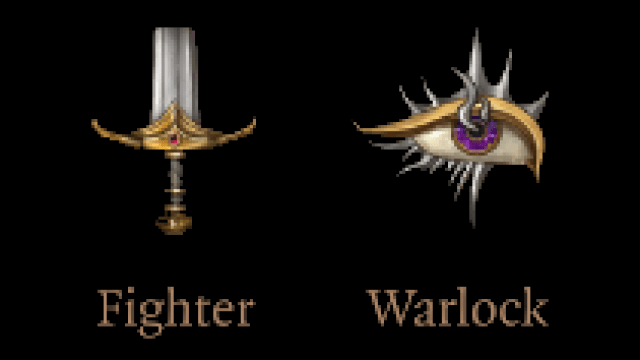
Because of BG3‘s interesting interpretation of Pact of the Blade, we actually don’t even need to use Fighter as often as we think.
- We only recommend this build: If you want to supplement a Champion or Eldritch Knight with some solid cantrip options while keeping your three attacks.
- What you gain: The Fighter keeps their three attacks per turn, due to how BG3 stacks Extra Attack with Improved Pact. If you go Eldritch Knight, you can make three Eldritch Blasts and one Weapon Attack in a turn, doing four instances of damage when set up with Hex. A Champion instead gets better critical hit damage. This build also can ignore Strength by focusing entirely on Charisma, making a Fighting Face. Not to mention the Fighter has third-level spell slots with Warlock, potentially getting area-of-effect options like Fireball.
- What you lose: The Fighter’s fourth feat is gone to the wind, as is Indomitable and the last class feature of the Fighter’s archetype. With fewer levels in Warlock, there are only three Invocation opportunities and only six spells known.
As of the current patch, Larian Studios has shown no real intent to fix the Extra Attack and Warlock’s Improved Pact stacking exploit. So, it’s free for us to assume that they have no plans to alter that. Luckily, this is a huge opportunity to build a really cool Eldritch Knight that can either swing three times or fire three Eldritch Blasts and a follow-up bow shot.
With a Fiend Warlock and Pact of the Blade, you can make a very dangerous spellcaster with third-level Pact spells, first-level standard magic, and the ability to follow up cantrips. The Fighter’s weakness of relatively low burst damage disappears instantly with access to Hex and the option to double Fireball a room when needed.
8) Warlock 3/Sorcerer 9
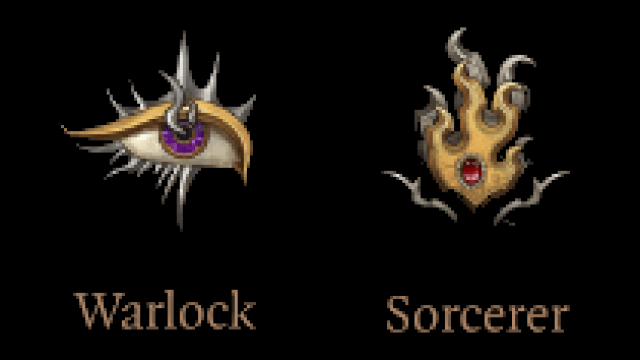
Those who are big fans of 5E might recognize at least these two names together as the start of the “Coffeelock,” an infamous build. The Sorcerer works well with the Warlock by default.
- We only recommend this build: For those looking for a legendary build and wanting to combine a Sorcerer’s spell list with a Warlock’s fantastic damaging cantrip.
- What you gain: Fiend Warlock for better armor proficiency and access to Eldritch Blast early on. Agonizing Blast, Beguiling Influence, Hex, Metamagic, Font of Power.
- Disadvantages: Lose access to sixth-level Warlock options. Lose access to endgame Sorcerer spells.
Since Eldritch Blast scales with spellcaster level, you can basically ignore Warlock for the rest of the game. You’ll want to get to level two for the Agonizing Blast option and any invocation you’d like. Beguiling Influence is a great option for the party’s “face,” or the person who does the talking. Level three is then optimal since it grants you access to level two Warlock spell slots—a critical part of the action economy engine you’ll be taking from.
Then, you hard-pivot to Sorcerer. Sorcerer lets you augment your spells with Metamagic and lets you use Font of Power to turn Warlock spell slots into sorcery points. Then, you can turn those points into spell slots on a short rest basis, generating four additional points per rest. Potentially more, if you invest extra levels into Warlock. This grants 12 sorcery points per day once you get to Sorcerer Two, which is frankly hilarious.
The cycle is legendary for a reason, but with forced long rests due to your party comp, it’s not going to break much. You’re also locked into two short rests a day, which can further neuter the power this build used to have on the tabletop.
In addition, if you’re into scamming the system, you can use Hirelings, retrained into Bards, to get many additional Songs of Rest, each of which functions as an extra short rest. That means you can replicate Coffeelock a bit better through an army of Bards.
7) Druid 8/Barbarian 4

The Druid is relatively tricky to multiclass with, as is the Barbarian. However, if you want a tank that can restore massive amounts of health with each bonus action, then combining these two unique tastes can make a real delicacy.
- We only recommend this build: If your party needs a tank that is more than a massive pile of AC.
- What you gain: A nearly full-power caster with the ability to Reckless Attack for accuracy, make Dexterity Saving Throws with advantage, and enter a Rage to double their durability.
- What you lose: By not getting to Druid 10, Circle of the Moon loses their Improved Wild Strike ability. The focus on unarmed attacks can lead to low attack rolls later on, making the Druid overly reliant on Reckless Attack, which can drain their health faster than usual, unless they use Rage wisely.
This build takes the inherent durability that Wild Shape provides a character and doubles it through Rage. Barbarians have kept their Resistance to all Damage from Wildheart: Bear Heart for too long. The bears want it back.
This Druid gets to Saber-Toothed tiger, an animal that can get 62 hitpoints, heal every turn, and knock foes prone to every attack. When not raging, this means that they can use Reckless Attack to make those attack rolls more likely and Danger Sense to survive in area-of-effect-heavy encounters more commonly.
However, when the Druid Rages, suddenly 62 temporary hitpoints become equivalent to 124. And you can Wild Shape as a bonus action, meaning your bonus action literally gives you 124 hit points. This takes a lot of setup but can turn your Druid into a powerhouse that is hard to put down in any amount of time.
You will have to Rage and then Wild Shape, which can be an awkward process for many druids. However, this is also a build that can utilize Tavern Brawler, since unarmed attacks while Shaped technically do benefit as unarmed attacks. So, you can rage, throw something, and then Wild Shape to start getting in faces.
This build focuses on the Circle of the Moon Druid, an archetype that can Wild Shape into several different animals as a bonus action. However, this same build with Circle of the Spores can enter Symbiotic Entity during the same turn as they rage, gaining 64 temporary hitpoints and keeping their weapon attack. You’ll have to make sure that you get donked for some damage or have Haste online so you can attack that turn, though, or you may run out of Rage.
Druid 10 is good for a Moon Druid who wants more damage but has fewer Rage charges per day, making you more reliant on long rests. For the Spores build, Druid Seven/Barbarian Five can be a good way to get Extra Attack and access a mode where you’re nearly impossible to down.
6) Wizard 9/Sorcerer 2/Cleric 1

If you’re tired of the same old classes taking on the frontlines, then you can mix it up just a bit with a dash of Cleric and a lot of four-HP classes.
- We only recommend this build: In the endgame. Leveling this build through Act One and early Act Two is a nightmare. You’re also a fairly dedicated frontline so if that’s what you’re going for, you’ve come to the right place.
- What you gain: Through abusing the Abjuration Wizard’s Arcane Ward and the innate damage scaling of Armor of Agathys, you have the ability to boost your health far above what would normally be allowed. When enemies do land hits on you, if they’re melee, they have to punch through 25 temporary hitpoints and the Abjuration Ward’s health pool.
- Disadvantages: Relatively low damage to far-ranged enemies. A slight reliance on melee reflect damage is never great. Loses access to Improved Abjuration, which can make recharging your Ward difficult.
Armor of Agathys is a spell normally locked to Warlocks, but putting seven levels in Warlock makes the build even more awkward. Thankfully, two levels of Draconic Sorcerer saves you some headache. The White Draconic Ancestor grants Armor of Agathys for free, and you can use your Wizard spell slots to heighten it to five easily.
Your Cleric level is here to give you heavy armor proficiency and shield proficiency, handing you the highest AC possible through Plate Mail and a Shield. Mix in Shield of Faith by burning first-level spell slots and you can easily see yourself at around 28 AC at endgame before you even put on a Cloak of Protection. Your domain is between War or Tempest, and we prefer the one where you can max-roll Lightning Bolts.
5) Fighter 8/Barbarian 4
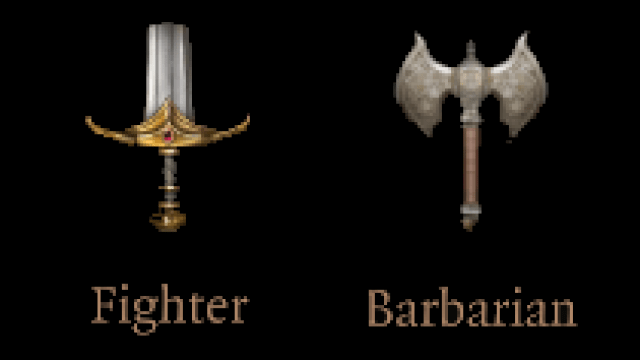
Sometimes, you just need to punch someone in the nose. Barbarian Four gets three Rages, Berserker, and a feat. With so many feats, you have the chance to get your Strength as high as possible while bumping Constitution with things like Tough.
- We only recommend this build: Want to stack on feats and deal an outstanding amount of damage? This is the way to go then!
- What you gain: Frenzy is an absurdly powerful ability that does massive damage and grants another bonus action. High crit chance with Champion Fighter at level eight, Remarkable Athlete, three Rages, and Berserker. You also get to keep the Fighter’s really good four feats.
- Disadvantages: Lose access to many more Rage charges, making you more reliant on long rests when you need to do maximum damage. By swapping Fighter and Barbarian, you can gain access to more critical damage but lose access to an extra feat.
This build keeps the Fighter’s M/O from dealing a lot of damage with weapons while giving them access to the durability of Rage. The only feature that a Fighter really loses is Indomitable, a great saving throw reroll but only very rarely available. They also lose heavy armor if they want to access Rage, which does sting a bit more.
Replacing that with Rage, though, can let your Fighter stand up front during big fights without any worries. While far from invincible, a Bear Totem Barbarian with Action Surge can tear a hole through small enemies instantly, letting you get in the face of larger problems, leaving them with a pissed-off warrior that has resistance to all damage except for Psychic. And that weakness can be solved with a simple elixir.
The Fighter’s archetype is a bit of a toss-up between Champion for more crits or Battle Master for access to conditions and crowd control. We like Champion, but there’s an easy argument for either.
4) Barbarian 5/Rogue 7
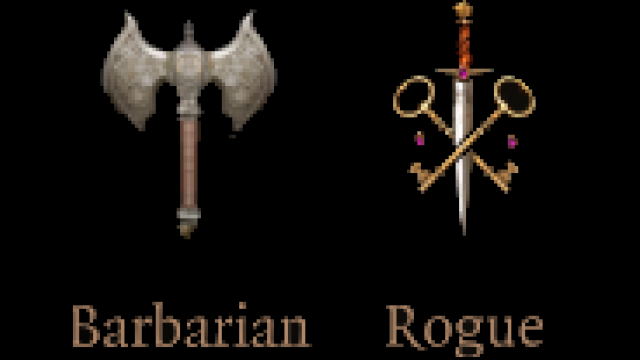
While the sneaky-mad build might not seem that impressive at first, the Berserker’s Frenzy is absolutely absurd.
- We only recommend this build: If you want to get an extra attack on your Barbarian and use Frenzy’s improvised weapon bonus action twice. Or swing your Rapier two more times, which isn’t bad either.
- What you gain: You get to swing four times, once even with Sneak Attack. Also: Reckless Attack to give yourself advantage.
- Disadvantage: Must use Finesse weapons to gain advantage on Sneak Attack. Stuck at 4d6 Sneak Attack and with a mere two feats.
This build gives the Rogue access to the easiest source of advantage in the game in Reckless Attack while offering the Barbarian a well-needed surge of damage. They have such a good chance to crit, only to be disappointed by rolling a mere d12. Why not a d8+4d6? Berserker is our subclass here since it grants us some additional attacks for dire situations.
If you’d prefer, you can go Barbarian 9 and Rogue 3 to barely scrape by with Thief, but Rogue offers more damage and utility at higher levels than Barbarian’s Nine through 12 features. Reckless Attack guarantees advantage on every attack you’ve ever wanted to make, after all.
If you’re worried about the Barbarian needing to use Dexterity, don’t be too afraid. Finesse weapons use the better of your Strength or Dexterity. But, if you want that Sneak Attack die, you must use a Finesse weapon. And, honestly, Barbarians don’t need to lean entirely on Strength to begin with. You could use Dexterity to attack and keep most of their features.
3) Fighter 2/Sorcerer 10

Have you ever seen what a Sorcerer can do with a single action? Now, can you imagine if they can do that twice in a round? You’ve not lived as a caster until you’ve performed an Action Surge double Fireball into a room of 10 panicking goblins. And you’ve not really lived as one until you use Quickened Spell and Haste to torch those same goblins with four Fireballs.
- We only recommend this build: If you can be a Sorcerer that does major damage and has a similar amount of durability to a Fighter.
- What you gain: You get access to most, if not all, weapon proficiencies, access to a Fighting Style, Heavy Armor, and Action Surge. This is on top of five metamagics, level five Spellcasting, and the sorcery point system.
- Disadvantage: Fighter 2 means losing level six spells for Sorcerer, as well as the Draconic’s level 11 subclass feature.
The goal for this build is to create a Sorcerer who has both heavy armor access and the ability to Action Surge. Heavy Armor tends to favor durability more than casting strength, which is usually fine. With the number of quarterstaffs, cloaks, and even gauntlets in the game that up spell attack rolls and spell save DCs—and the Birthright hat for additional Charisma—your spells will be plenty hard to save against.
By going Brass Draconic Sorcerer, we are basically guaranteeing that we’re going to be a blaster. Draconics tend to stick to an element—in this case, Fire—and can even cast Sleep when we need to. The Fighter Style of Defense and Heavy Armor gives our Sorcerer the opportunity to get upwards of 25 AC by endgame, depending on what items they are handed.
Haste and Action Surge are a very strong combo. They allow the Sorcerer to cast up to four spells per turn, as long as the Sorcerer takes Quickened Metamagic. With 22 Charisma (from Birthright or the Mirror), this Sorcerer can fill a room with 32d6+24 fire damage. That’s an average of 136 damage in a round applied to a 20-foot radius. Very few encounters match that unless they resist Fire. In which case, 112 damage with Lightning Bolts isn’t the end of the world.
Alternatively, the Sorcerer can really gum up a fight with Action Surge. If you, for instance, fail a Hold Person on a group of priority targets, Action Surge lets you have a re-do.
This build also functions with Wizard, though at much-reduced damage due to a lack of the Quickened Spell feature and no easy way to attain 22 Intelligence—without taking the Mirror away from the rest of the party, of course.
2) Paladin 3/Sorcerer 2/Warlock 7

This build might seem similar to the one above, the Coffeelock. However, instead of a caster, we are going to slam people with Smites, kind of like how a Hexblade would work on the tabletop. Our Paladin, which is our first class, gives us Divine Smite and a Fighting Style, alongside some impactful low-level spells. If you want the third level, you can also take Vengeance for a high-damage rush-down build.
- We only recommend this build: If your other melee character is a high-health melee warrior, such as a Barbarian, Fighter, or Ranger. We’re spending a ton of levels on four and five-health classes, so we’re not going to be the beefiest. If we want to lock down hallways, we have to pray for quite a few misses from enemies or lucky saving throws.
- What you gain: Divine Smite, Vengeance, Metamagic, Power Font, Fiend Warlock, and ranged Eldritch Blast.
- Disadvantage: Spreading classes very thin. You only gain access to fourth-level spells from the Warlock pool, since Warlock spellcasting is different than standard spell levels.
The two levels in Sorcerer (for our case, Storm Sorcery works the best for the flight) are mainly for Metamagic and Power Font. Metamagic will be Distant and Extended since we just won’t have many sorcery points. Those two spells at least have some synergies with the Paladin’s spell list.
Then, you fill out the rest of the levels with Warlock. We don’t want to invest entirely into Sorcerer since those d6’s add up quite quickly. Fiend Warlock provides us temporary HP, a fantastic ranged option in Eldritch Blast, and some great Invocations to work with.
That being said, you can tweak your levels in Paladin and Warlock at your leisure. The Sorcerer is in here to give us power in Metamagic and Spell Points, but the Paladin and Warlock can really be interchangeable: Paladin for more generic defensive abilities like adding Charisma to saving throws or Warlock for a better offense through better spells.
1) Rogue 4/Ranger 8

If you’ve ever made a ranged assassin in Skyrim and loved every second of it, this build will make you feel just as overpowered as that did. There’s some flexibility on how deep you can go into your Rogue or Ranger levels, but the key is just to get to around level four or five for each so that you can exploit the nasty subclass combo that is Gloom Stalker Assassin. By pairing the two, you get to leverage Assassinate and Dread Ambusher for some of the most powerful openers possible in the game.
- We only recommend this build: If you want to end fights as quickly as possible because if you play your cards right, you’ll be able to end a lot of fights before they even get started. This multiclass build will have one character taking out half a pack before anyone else gets to take a turn.
- What you gain: Going with this particular build, you still get three feats as well as the best reason to play this class combo, Assassinate and Dread Ambusher. Hitting level five as a Ranger will give you Misty Step, which can add to your ability to surprise enemies and gain high ground to further your advantages in battle. Other combat perks to this build include Umbral Shroud, Sneak Attack, and an Extra Attack.
- Disadvantages: This build is heavily predicated on getting the jump on your enemies so you’ll want to make sure you’ve always got tricks up your sleeve and aren’t getting put into combat on someone else’s accord, or it won’t feel quite as powerful.
If you start encounters in stealth and get the jump on your enemies with this build, you’ll be able to take out most single enemies around your level in one shot. If you’re using this build to surprise a group, you’ll probably be able to take out two or three enemies before your teammates get a chance to jump in. Executing priority targets, like spellcasters or Barbarians, before they can set up can save your party a lot of headaches.
Even if you’re not playing a Rogue or Ranger as your main character, the companion Astarion can easily be specced into this build as you level him up. Doing so can completely reshape the way that your encounters start and help you shorten your fights. It’ll also allow you to run around with your team and take out enemies. If you play high ground properly, there are many situations where you can effectively solo what might otherwise be challenging group content by using Hide to stealth and assassinate enemies one after another.
This list emphasizes the combat power and out-of-combat utility that multiclassing can offer. However, this is a dangerous path to walk. The standard class builds can keep up fine, especially in the lower difficulties of BG3. We only recommend multiclassing if you’re open to experimenting or know enough about late-game abilities of classes that you’re okay with losing them.
Which classes are best for multiclassing in BG3?
Figuring out multiclassing can be difficult, as it’s a complicated game mechanic that you can easily mess up. Here are a few classes we consider to be the best for multiclasses.
Warlock multiclass builds
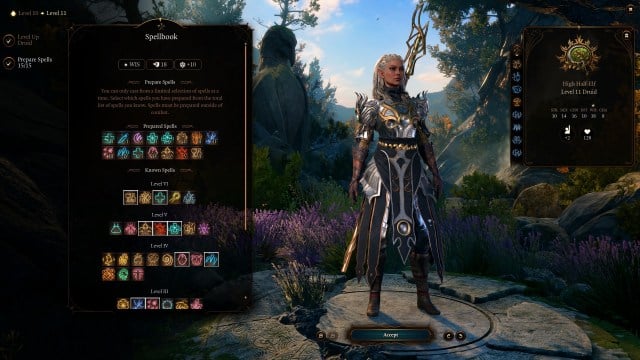
- Best paired with Bard, Paladin, Sorcerer
Every single class in the game can benefit from a few multiclass levels into Warlock. Period. Warlocks get their spells back on short rest and have plenty of utility actions, buffs, and debuffs to turn the tide in battle. You can’t really go wrong pairing this up. Players tend to multiclass into this because it fits with every build and comes with little drawbacks.
That being said, the Warlock gains many benefits from being charismatic. A shocking number of classes can work with this. Paladin Warlocks can utilize refreshing spell slots to Smite their foes, for instance. A Paladin with Pact of the Blade can drop their Strength to eight while relying solely on Charisma and Constitution.
Sorcerer adores those same spell slots when making sorcery points and loves the strength of Eldritch Blast. They can also afford the minor defensive options that come from the Warlock, from light armor proficiency to Armor of Agathys.
Bards can also utilize Warlocks. Specifically, Valor and Sword College Bards with Pact of the Blade can finally use Charisma for attacks consistently, making them far more useful on the frontlines. It certainly helps to have a cantrip that deals damage rather than just mocking everyone, too.
Sorcerer multiclass builds
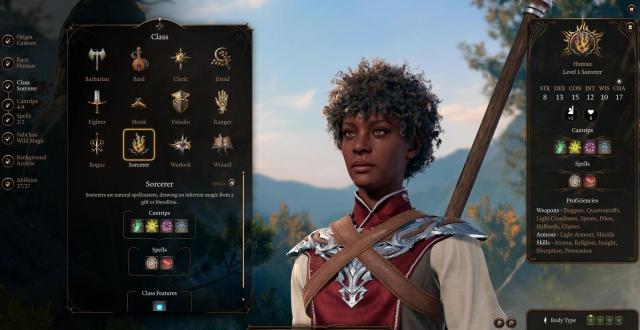
- Best paired with Paladin, Warlock, Wizard
Sorcerer classes are incredibly powerful, using their metamagic skills to tweak spells and stats to their command. Multiclassing into Sorcerer gives you access to some of the best abilities in the game with Metamagic, sorcery points, and very strong and immediately active subclasses. Players who specialize into Sorcerer tend to do so to maximize their spell damage or to open up a bit more functionality in their skillset. Consider this if you want to maximize mage power.
Paladin Sorcerers are strange beasts, utilizing their own Haste or Fireballs to wipe encounters single-handedly and becoming deadlier at range. They can use sorcery points to develop additional spell slots to convert into Smites, as well.
Warlock Sorcerers are great for supporting Warlock spell slots with excellent standard spells. Warlock spell slots can be readily turned into sorcery points if otherwise unused before a rest. They also grant the Sorcerer some additional staying power with Hex and refreshing spell slots.
One of the biggest weaknesses of Wizards is their lack of Quickened Spell. Thankfully, a Sorcerer multiclass fixes that immediately. With this strange combination, the Wizard gains access to Metamagic options and sorcery points for converting unneeded spells into ammunition. And, thanks to learning magic through scrolls, the Wizard barely loses any spell slots. Just make sure you know which class has what spells, since they key off of Intelligence or Charisma—not the higher of the two.
Cleric multiclass builds
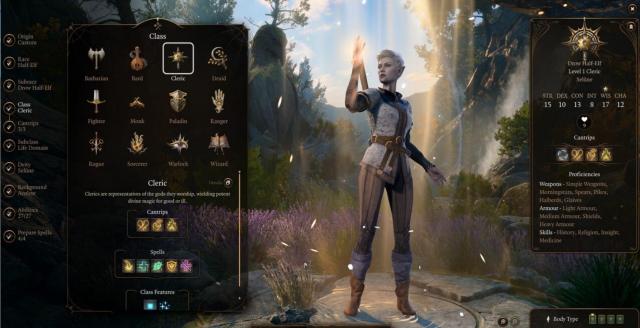
- Best paired with Druid, Ranger, Wizard
Many players have chosen to go one level into light Cleric to open up a bunch of healing options without investing too heavily into utility. This is a great pair-up if your party is lacking a dedicated healer, as you can get in some clutch heals on a damage dealer of your choice. Of course, Cleric is solid as a single class, but multiclassing into it gives most archetypes sustainability. It also grants very easy access to heavy armor through the War or Tempest domains.
Druids have a very strange first-level spell list that lacks a few must-have spells, as well as no strong ranged cantrip. A single level of Cleric can fix that, while also providing them with heavy armor proficiency if the right domain is picked.
Rangers can afford a few levels into Cleric if they want some slight combat control. They can also benefit a bit from War Cleric’s bonus action swings, especially if they are a ranged build.
Wizards are really just in it for the heavy armor, but can benefit a bit from having very strong concentration options starting at level one: Bless, Shield of Faith, and even Sanctuary are all solid.
Bard multiclass builds
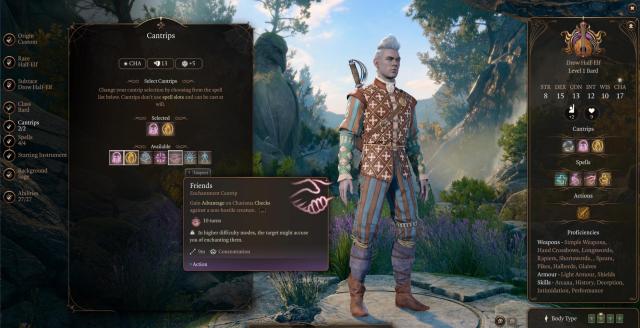
- Best paired with Fighter, Paladin, Sorcerer
Bard class is fantastic because of the unrivaled support and utility they can dish out to teammates. Players are multiclassing into Bard, especially with Rogue and Sorcerer, for the added functionality that it can bring. Bards can play music to buff teammates or debuff enemies as needed. They offer excellent crowd control and sustainability even with a small dip.
Even a level into Bard offers a Fighter a few benefits. Mainly, Tasha’s Hideous Laughter and Healing Word are great spells to have in a pickle and Bardic Inspiration is a very much above-average bonus action. Great for sword-and-shield or bow builds that often spin their wheels and waste that action type each turn.
Paladins also don’t have many great uses for bonus actions, outside of exactly Smite spells. So, giving them Healing Word, more spell slots, and access to very strong debuffs at early levels can be significant. And a bigger investment allows for a very supportive Paladin.
Unlike the tabletop version of Sorcerer, we don’t have access to a true Supportcerer subclass. Bard multiclass is the next best thing, giving the Sorcerer another way to spend their bonus action as well as a few strong spells that Wizards get but Sorcerers don’t, like Tasha’s Hideous Laughter. A smaller investment is preferred since Sorcerer has some very potent high-level spells.
Fighter multiclass builds
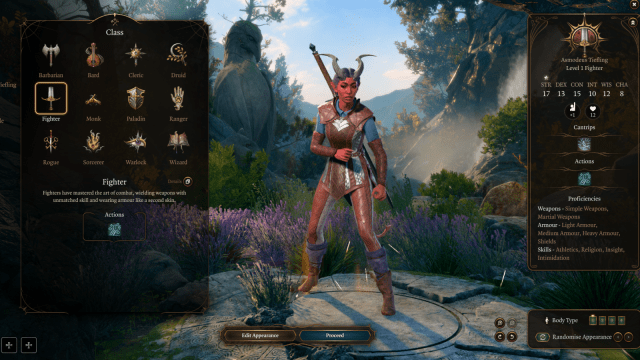
- Best paired with Barbarian, Druid, Rogue, Sorcerer, Warlock, Wizard
The Fighter’s multiclass opportunities are well-known in the 5E community. Heavy armor and martial weapon proficiency—if the Fighter class is taken at level one—are incredible, as are their Fighting Style and Second Wind. However, with how Larian handles Haste, the Action Surge ability can let classes like Sorcerer cast up to four Fireballs in a turn, or cast Hold Person and follow up with six or eight weapon attacks.
Fighter is universally helpful, with a two-level dip being a boon to any class. Action Surge is just that insane. However, Barbarians, Druids, and Rogues can find the Fighting Style that Fighters offer to be particularly helpful. That boosts a Barbarian’s damage or armor class, can let a Circle of Spores druid be a bit more flexible on the frontlines, and can let a Thief Rogue pump out major damage with their two offhand attacks.
Fighter levels into a spellcaster are also very strong. Action Surge for spellcasting is nice, but so is medium armor (or heavy, if you respec at Withers and start as a Fighter) and the Defense Fighting style. Eldritch Knight, depending on your investment, can also play a small role in improving your damage each turn as a spellcaster.
Best multiclass options for companions in BG3
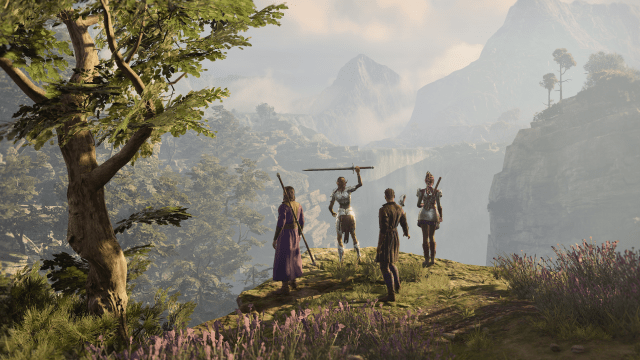
While it is possible to make any companion any build in BG3, keeping a character’s original class feels a lot more fun. Here are some suggestions of directions you can take your party members without fully respecing them.
- Lae’zel: Barbarian, Druid, or Paladin. Keep her weapon-focused by going Circle of the Spores, since you want to use that Great Weapon Fighting style to your advantage.
- Shadowheart: Druid or Fighter. While Shadowheart is already an excellent class, improving her combat abilities with Wild Shape or Action Surge never hurts.
- Astarion: Fighter or Ranger. Improving Astarion’s accuracy for Assassination shenanigans is an excellent idea. Gloom Stalker tends to handle that role fine, but Action Surge can come in handy to ensure you get slightly more attacks during important round ones.
- Gale: Cleric or Fighter. Gale doesn’t have the stats to make aggressive casting in other classes viable. But, multiclassing Cleric can give him heavy armor proficiencies to keep your Wizard alive. Multiclassing Fighter lets you partake in triple Fireball shenanigans or, with a deep enough investment, let you take on Eldritch Knight cantrip duties.
- Wyll: Bard, Paladin, or Sorcerer. Classes that like Charisma tend to synergize fairly well with one another. Wyll can easily become the Party’s supportive face, dedicated tank, or blaster caster depending on which Charisma class you go towards.
- Karlach: Druid or Fighter. Barbarians tend to hate multiclassing due to how Rage works, but giving Karlach Action Surge or Wild Shape options can either boost her damage or bump her tankiness.
- Halsin: Barbarian, Cleric, or Fighter. Taking care of a Druid is rough. Boost his durability through Barbarian or AC with Cleric. Fighter’s Action Surge can let Halsin cast an important spell, Wild Shape, and then still attack, letting him set up Entangles or Spike Growths before doing his thing.
- Jaheira: Barbarian, Cleric, or Fighter. Much like Halsin, Jaheira serves the party best as a Wild Shaping menace. As such, multiclasses that beef her up or give her something to do with Druid’s middling level-one spell slots are worth considering.
- Minthara: Bard, Fighter, or Warlock. Minthara’s stats set her up well for being a more Strength-based Paladin, but that doesn’t mean she doesn’t have the music in her. Fighter’s action surge unlocks her ridiculous burst damage, while Bard and Warlock give her better support options.
- Minsc: Cleric or Fighter. Minsc is fairly stated as a ranged Ranger. Keep him away from the frontlines as a Cleric who can use bonus actions to shoot again or a Fighter with Action Surge.



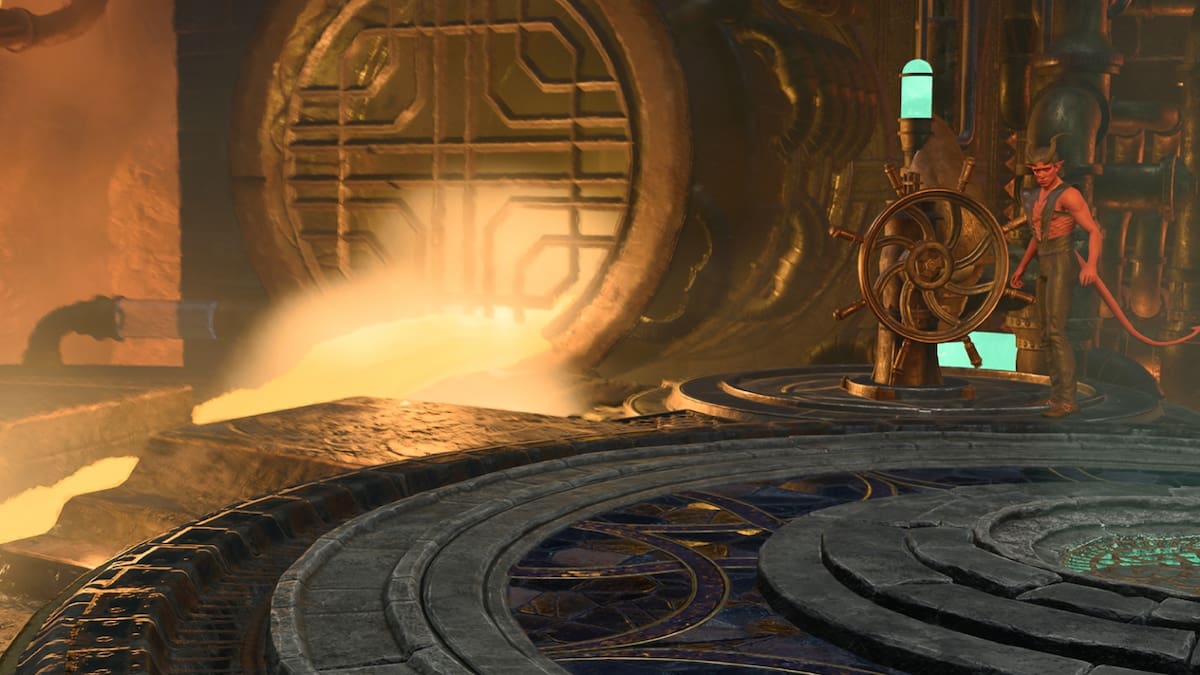
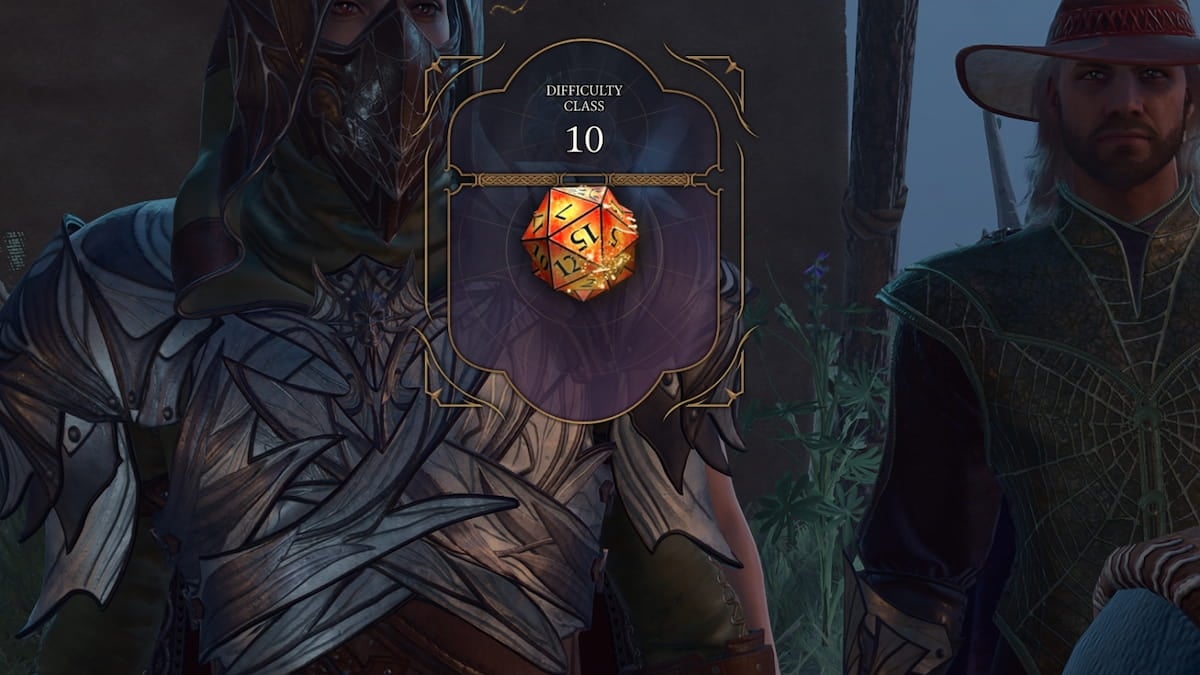
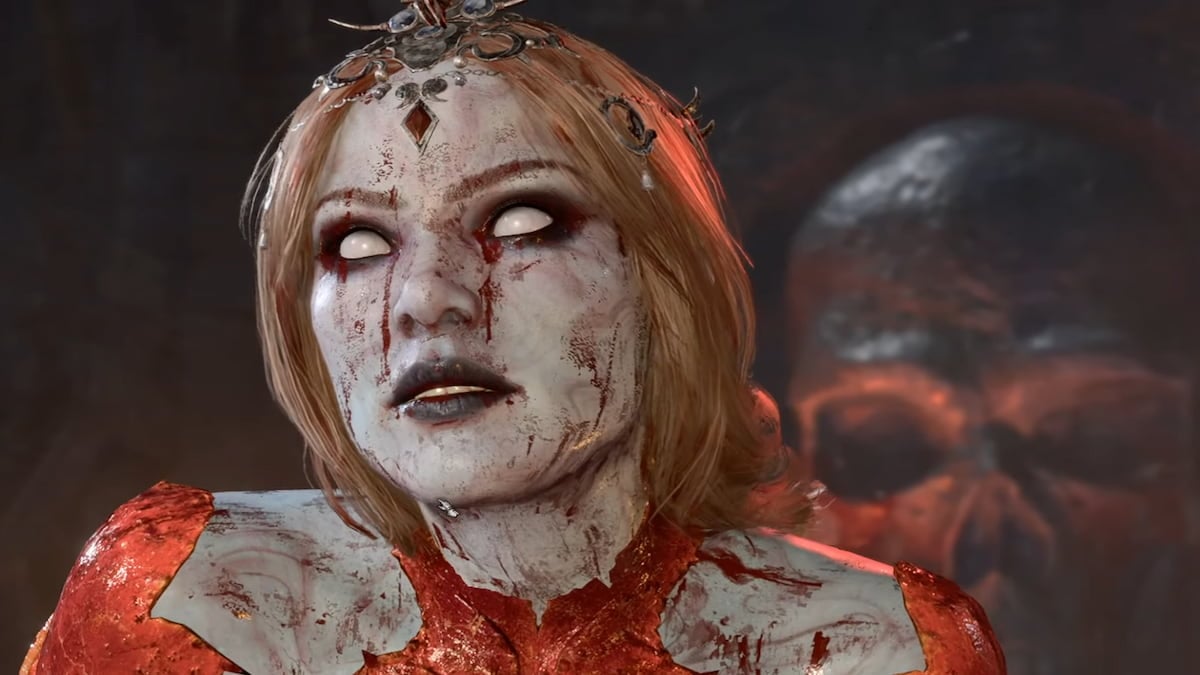



Published: Oct 19, 2023 12:07 am